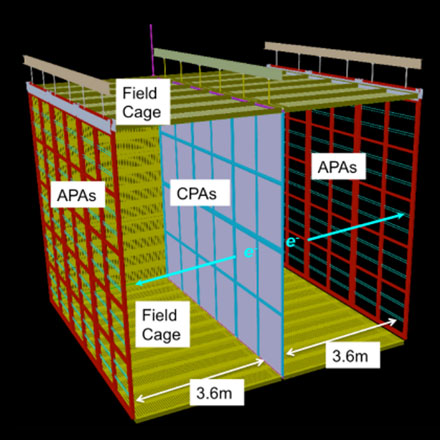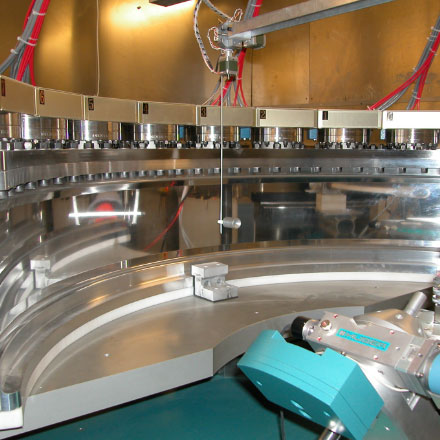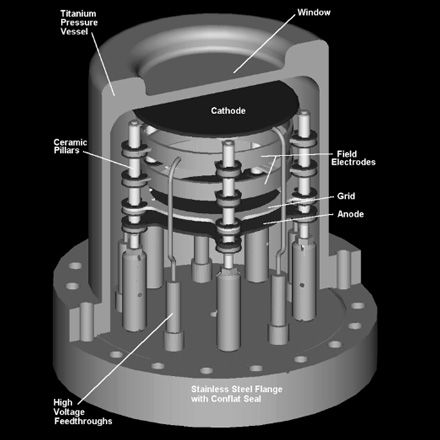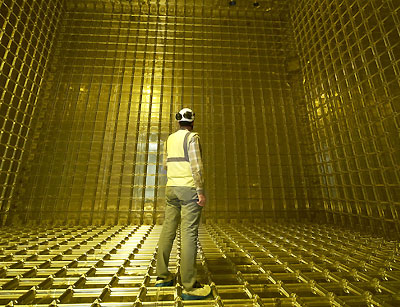Sensors
Noble Liquids and Gases
Noble liquids and gases have many characteristics—including high electron and light yield, excellent electron transport, and robust radiation hardness—that make them attractive as ionizing radiation sensors. The Noble Liquid and Gas Detectors Group performs fundamental studies on the physics of noble liquid- and gas-filled radiation detectors, with the goal of achieving the best position and energy resolution and a high counting rate. We apply this knowledge to design and fabricate complete detector systems in collaboration with x-ray synchrotron and neutron source users, particle physicists, and homeland security specialists.
Our Capabilities
- Simulation of detector electrode structures to accurately reflect real-world operation
- Proposal of detector designs based on a thorough qualitative and quantitative understanding of user requirements
- Application of state-of-the-art printed-circuit techniques and equivalent-circuit analysis of multi-electrode detectors
- Calibration of detectors via energized x-ray sources; alpha, beta, and gamma sources; and an Am-Be thermal neutron source
- Assembly of detectors in dedicated cleanrooms equipped with laminar flow benches
- Inspection of assembled detectors with submicron-resolution optical microscopes
Case Studies
LAr Time-projection Chambers

Schematic of protoDUNE detector. The TPC is 6 m high, 7 m wide, and 7.2 m long, corresponding to a LAr fiducial mass of 400 tons. APAs and CPAs represent “anode plane arrays” and “cathode plane arrays,” respectively.
The unsurpassed energy resolution of our liquid-argon (LAr) calorimeter for the ATLAS detector at CERN increased the confidence limits in the discovery of the Higgs boson and spurred the current development of LAr time-projection chambers (TPCs) for neutrino oscillation experiments. Neutrinos are some of the most abundant and least understood fundamental particles, which oscillate (change) between three types as they travel through space.
We played a leading role in the TPC design and readout for protoDUNE, the proof-of-principle detector for the Deep Underground Neutrino Experiment (DUNE). Involving more than 30 countries, this flagship U.S. Department of Energy high-energy physics project to measure neutrino oscillations could unlock mysteries about the universe’s evolution and the nature of matter.
Large-area Neutron Detector

Our 120° position-sensitive neutron detector consists of eight multiwire segments. Its large detection area and high sensitivity to thermal neutrons greatly advanced the state-of-the-art for protein structure determination.
Unlike x-rays, neutrons are strongly scattered by hydrogen atoms, which make up nearly half of all atoms in proteins. We designed and fabricated a large-area neutron detector which captures scattered neutrons to reveal 3-D protein structures, including the locations of individual hydrogen atoms. Installed at neutron sources at Los Alamos National Lab (now at Oak Ridge National Lab) and the Australian Nuclear Science and Technology Organization (ANSTO), our detector has been instrumental in studies of molecules for drug delivery, hydrogen-storing materials for clean energy, and negative-thermal-expansion materials for electronic, optical, and other applications.
High-pressure Gamma Spectrometer

Computer-aided-design visualization of our high-pressure spectrometer (operating with 55-bar Xe).
We designed and fabricated a high-pressure Xe-filled gamma-ray spectrometer that not only detects gamma rays but also determines their energies at a resolution that is competitive with that of room-temperature semiconductor detectors. This mobile low-power sensor can accurately identify radioactive materials in the field.





